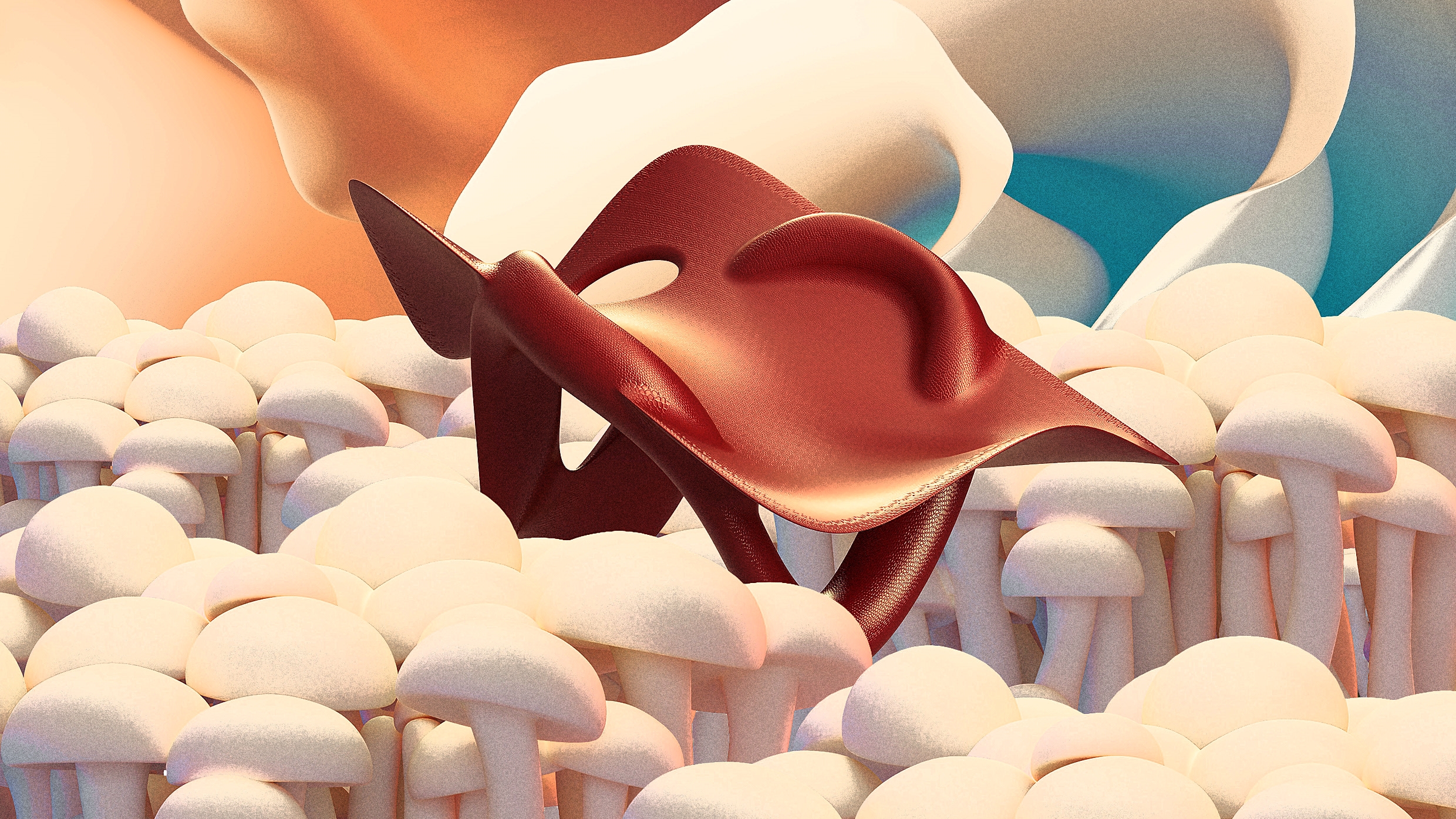Mushroom leather was supposed to revolutionize fashion. Then a promising startup halted production
In 2018, sustainable materials company Bolt Threads debuted Mylo, its mycelium-based leather—and for many in the textile space, it signaled that a viable alternative to animal leather was in clear view. Big name brands from Stella McCartney to Adidas expressed interest and even launched products with Mylo, from a concept Stan Smith shoe to a limited-run luxury handbag. Subsequently, Bolt Threads raked in more than $300 million in investments. In September 2021, Bolt said its mushroom leather was ready for commercial production.
Less than two years later, production of Mylo has been paused indefinitely.
The news that Bolt Threads was halting production may seem like a death knell for emerging sustainable materials. In an interview explaining the move, the startup pointed to the challenges of the current economic climate for securing capital, an issue that could plague any fledgling company.
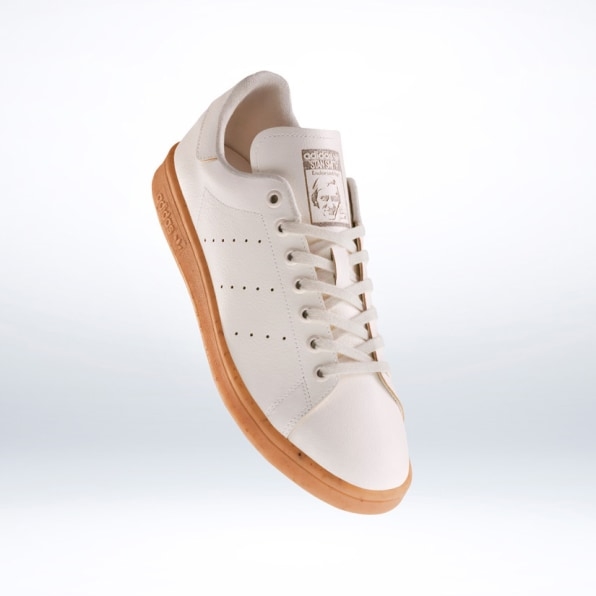
But experts say Bolt’s shutdown doesn’t necessarily mean the end of mushroom leather as an entire industry. Startups like MycoWorks and Ecovative are still working on their own mycelium-based materials, and a host of others are exploring the possibilities of leather alternatives made of everything from pineapple to cactus to coconut.
What the situation with Mylo illustrates, though, is the complex landscape and market pressures that next-gen textile companies have to navigate. It’s also indicative of the reality of innovation: As more companies enter the field, there won’t be room for all of them to succeed.
Mushroom leather isn’t over
Bolt Threads has halted production, but it’s not the end of the story for the startup. In a statement, the company said that scaling up Mylo demanded “both time and capital investment” that it was struggling to secure. Bolt Threads, which was founded in 2009, said it’s working to determine whether it will be able to restart production at some point. In the meantime, it’s still working on its silk alternative, CEO Dan Widmaier told Vogue Business.
Other mycelium leather companies continue to push forward. In June, Ecovative announced that it had raised $30 million to scale both its mycelium food offerings and its mycelium textiles and foams. That brought its investment total to $120 million. MycoWorks, another mycelium leather company that produces a material called Reishi, recently celebrated its 10-year anniversary (though it publicly launched Reishi in 2020).
“We’ve gone from the original, really interesting but lower-quality samples our founder first made . . . and in 10 years, we’ve been able to unlock all of this incredible potential that mycelium has,” says Matthew Scullin, CEO of MycoWorks.
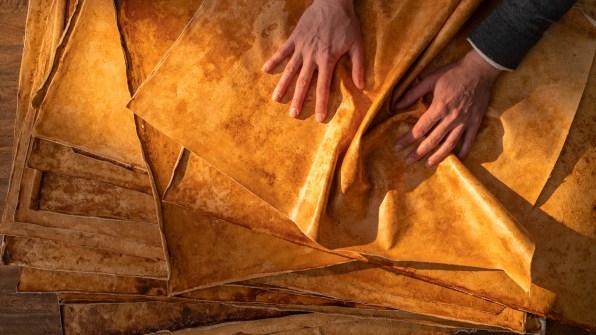
MycoWorks has partnerships with brands including Hermès, General Motors, and luxury hat designer Nick Fouquet, which recently announced the expansion of its Made With Reishi collection. In January 2022, MycoWorks announced a $125 million investment that it planned to use to build a mass-production facility in South Carolina. The 136,000-square-foot facility is set to open September 20, MycoWorks shared exclusively with Fast Company. Scullin says it will produce “millions” of square feet of Reishi annually??.
While 10 years may seem like a long time to get to this point, Scullin says it’s nothing compared to what the company is competing against: animal leather. “This is happening extremely quickly,” he says. “We are talking about mycelium achieving the level of quality and [meeting] luxury needs . . . in a matter of years, when leather had literally centuries before that.”
To Scullin, it’s clear that there’s still a lot of excitement and interest in mycelium leather, particularly from the luxury market, which has been booming. “We’ve been fortunate in that we have been a bit buffered from the wider macroeconomic issues,” he says. “Our luxury partners continue to double down on sustainability and new materials. So I think it is completely inaccurate to characterize the new material movement within luxury or fashion as somehow having a hiccup.”
But to capitalize on that interest, and for a startup to truly make an impact in this space, he says two things need to happen: The product has to actually be good, with a level of quality that luxury brands expect; and the company has to be able to scale. This is where things can get tricky, for reasons both in and out of a company’s control.
The pressures on innovative startups
Brands and consumers are excited about new, sustainable textiles—often called next-gen materials, which include everything from recycled or upcycled textiles to plant-based alternatives for leather, fur, silk, and down, and even cultivated animal leather.
But that excitement can quickly turn into unrealistic pressure on a fledgling business. The fashion industry has skewed our perception of how long production should take, notes Helen Zha, a chemical and biological engineering professor at Rensselaer Polytechnic Institute, who has experience developing sustainable biomaterials. Consumers expect things to move quickly, because they see new clothes coming out every season. “And that’s just not really realistic,” she says, for scientifically advanced things like new materials.
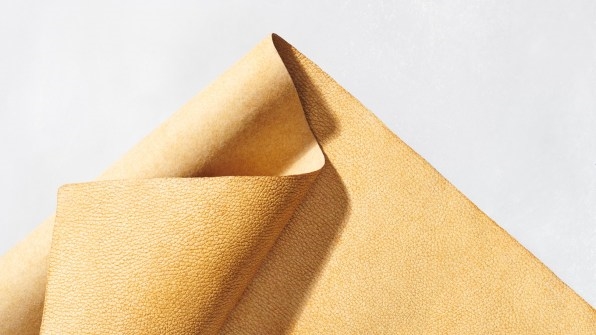
Startups in the next-gen material space have laid a lot of scientific groundwork for these innovations, she adds, but their products are still very much works in progress. They’re not ready for full-scale rollouts, or not yet priced competitively. It can be a catch-22 situation, she adds, “because the impatience of the consumer might actually cause a scenario where [the companies] are not given the time that they need to produce the quality and scale people want.”
New materials also come with new—and higher—expectations: Consumers expect alternatives to be “better” for the planet than what’s currently available. There can also be a misunderstanding of the current landscape and what alternatives like mycelium leather are trying to replace. Animal leather, for instance, uses petrochemicals, often as a protective coating or a softening agent (not all petrochemicals are plastic, though they all come from fossil fuels).
“Some [animal] leathers can have up to 25% petrochemicals. Why are you expecting the newcomers to have zero?” says Sydney Gladman, chief scientific officer at the Material Innovation Initiative, a nonprofit focused on accelerating the next-gen materials industry. Those petrochemicals provide a level of performance that brands don’t want to sacrifice entirely in the name of sustainability. (Reishi, for example, has less than 1% plastic due to its semi-aniline leather finish, a protective layer common on animal leathers; the product is still biodegradable, and the company is working on bio-based plastic films for future use).
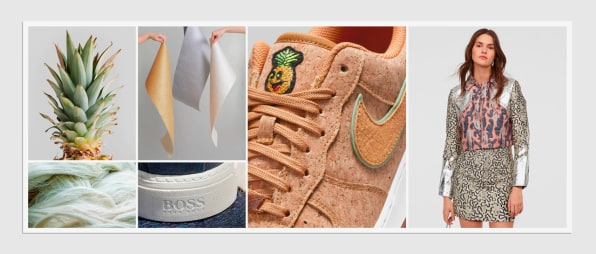
Investors can be impatient as well. Developing new materials takes time, and a lot of capital for R&D, building factories, and finding customers—which investors aren’t always willing to wait for. “If you get, say, classic tech investors on board with you, they’re going to be extremely impatient, and not understanding of why it’s taking so long and so much money,” Gladman says.
Fashion brands may be impatient for change too; many of them have already made pledges to increase their use of sustainable materials, and they want those replacements now. Gladman says brands can’t expect startups to come to them at scale, with prices comparable to traditional options. Instead, brands need to work with the startups from the outset to develop new materials.
Stella McCartney had worked with Bolt since 2017, but that still wasn’t enough to secure Mylo’s future. In a statement about Mylo’s halted production, the company stressed the need for more brands to partner with these companies early on. “Next-generation innovators have the vision, but it is up to brands and consumers to see the value in supporting startups that disrupt our industry for the better,” the company said, adding that it was proud of the work Stella McCartney did with Bolt, and that it will “continue to support alternative materials for a more sustainable future.”
Some startups just fail
Even if a company does everything (or nearly everything) right, the reality of an emerging field like mycelium leather is that some companies will fail. “There is a natural trend in a nascent industry where in the initial phase there’s a surge of lots of new companies forming as excitement grows, and then over time not all of them can survive,” Gladman says.
As Hayes Ferguson, director of the Farley Center for Entrepreneurship and Innovation at Northwestern, put it over email, it’s like a horse race. “There will be a crowd, then a couple running neck and neck until one breaks away and takes the lead. A lot of factors will go into which one wins, including luck.”
Although no one can predict which companies will ultimately win out, experts agree that the next-gen materials space isn’t going away—it’s just unclear whether it will be dominated by mushroom leather or something else.
“The genie is out of the bottle,” Zha says. “We’re going to see more and more companies enter this space. They may not all be mycelium—they may be pineapple, coconut, algae—but more and more of these companies are coming online because sustainability is a really big issue.”
(22)


